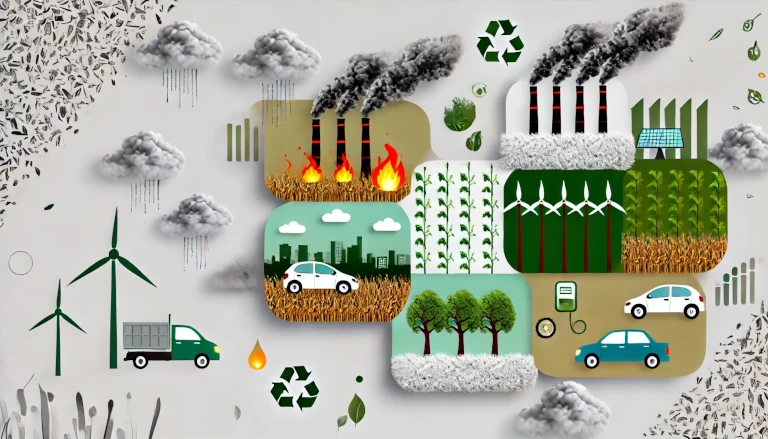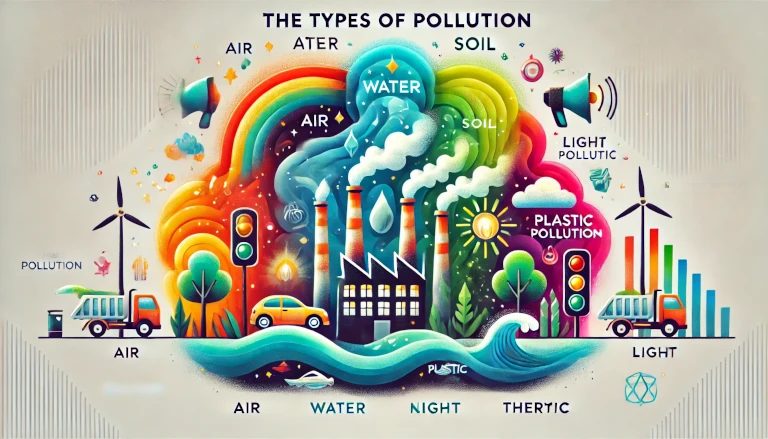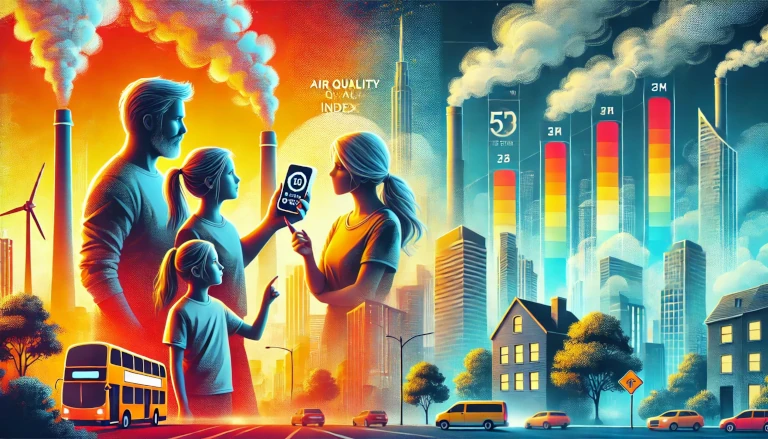Delhi, the capital of India, is one of the most polluted cities in the world. Every year, particularly during the winter months, the city’s air quality deteriorates to dangerous levels. This air pollution crisis has become a serious health hazard for its residents and poses a significant challenge for the environment. In this blog post, we’ll explore the causes behind Delhi’s air pollution, its effects on human health and the environment, and the proposed solutions that can help tackle the problem.
What is Causing Delhi’s Air Pollution Crisis? 🌍🚗
Delhi’s air pollution problem is a result of several contributing factors. These factors combine to create a toxic mix of particulate matter, gases, and pollutants in the air. Some of the major causes include:
1. Vehicle Emissions 🚗🚛
Delhi has a high number of vehicles, which are one of the main sources of air pollution. Older vehicles and the large number of diesel-powered vehicles in the city emit harmful gases like nitrogen oxides (NOx) and particulate matter (PM2.5), which severely degrade air quality.
2. Industrial Pollution 🏭
The industrial areas around Delhi contribute significantly to air pollution. Factories, power plants, and manufacturing units release pollutants like sulfur dioxide (SO2) and particulate matter into the atmosphere, worsening air quality.
3. Construction Dust 🏗️
Rapid urbanization and constant construction activities in and around Delhi create massive amounts of dust, adding to the city’s particulate matter levels. This dust, when mixed with other pollutants, further deteriorates the air quality.
4. Stubble Burning 🔥
One of the most notorious contributors to Delhi’s air pollution is the burning of crop residue (stubble) by farmers in the neighboring states of Punjab, Haryana, and Uttar Pradesh. This practice, especially in winter, releases massive amounts of smoke, which drifts into Delhi and causes a sharp spike in pollution levels.
5. Firecrackers During Festivals 🎆
Firecracker use during festivals like Diwali leads to a short-term but severe increase in air pollution. The smoke and particulate matter released during firework displays contribute significantly to the overall poor air quality during this period.
6. Seasonal Factors 🌬️
Delhi’s air pollution is particularly severe in the winter months due to climatic conditions. Cold air traps pollutants close to the ground in a phenomenon called temperature inversion, preventing the dispersion of toxic gases and particulate matter.
The Impact of Delhi’s Air Pollution Crisis on Health and Environment 🏥🌿
The effects of air pollution in Delhi are devastating for both human health and the environment.
1. Health Hazards 🏥
- Respiratory Issues: Exposure to high levels of air pollution causes serious health problems such as asthma, bronchitis, and chronic obstructive pulmonary disease (COPD).
- Heart Diseases: Long-term exposure to pollutants increases the risk of heart attacks and strokes.
- Reduced Life Expectancy: According to studies, people living in heavily polluted areas like Delhi have a reduced life expectancy due to constant exposure to toxic air.
2. Environmental Impact 🌿
- Climate Change: Air pollution contributes to global warming, as greenhouse gases like carbon dioxide and methane trap heat in the atmosphere.
- Damage to Vegetation: Pollutants like sulfur dioxide and nitrogen oxides harm plants by damaging their leaves and reducing their ability to photosynthesize.
- Water Pollution: Airborne particles eventually settle into water bodies, contaminating them and harming aquatic ecosystems.
Proposed Solutions to Address Delhi’s Air Pollution Crisis 🌬️✅
To solve the Delhi air pollution crisis, a multi-pronged approach involving government policies, technological innovation, and public participation is essential. Some of the proposed solutions include:
1. Adoption of Electric Vehicles (EVs) 🚗🔋
Encouraging the use of electric vehicles can significantly reduce emissions from vehicles. Electric cars, buses, and even bicycles produce zero tailpipe emissions, helping to cut down on harmful pollutants.
2. Transition to Cleaner Energy Sources 🌞
To reduce industrial emissions, Delhi must shift from coal-based power plants to cleaner energy sources like solar, wind, and natural gas. Incentives for industries to adopt cleaner technologies will also help curb pollution.
3. Strict Enforcement of Pollution Norms 🚨
The government must implement and enforce strict emission standards for both vehicles and industries. The odd-even scheme, which restricts vehicles based on their license plate numbers, has shown some temporary success, but longer-term solutions are needed.
4. Public Transport and Carpooling 🚌🚲
Promoting public transportation and carpooling will reduce the number of vehicles on the road. Expanding the metro system and encouraging cycling are also effective ways to decrease vehicular pollution.
5. Preventing Crop Stubble Burning 🌾🔥
The practice of stubble burning needs to be replaced with more sustainable agricultural practices. The government can support farmers with subsidies for straw management equipment and promote alternative uses for crop residues.
6. Tree Plantations and Green Spaces 🌳
Increasing green cover in and around Delhi can act as a natural filter for air pollutants. Planting trees that can absorb harmful gases and creating urban forests will help improve the air quality over time.
7. Awareness Campaigns 📢
Public awareness campaigns on the effects of air pollution and how individuals can contribute to reducing it are crucial. Simple actions like reducing the use of personal vehicles, minimizing the burning of waste, and opting for clean energy alternatives can make a big difference.
Conclusion: A Collective Effort for Cleaner Air 🌬️🌍
The Delhi air pollution crisis is a complex issue that requires urgent attention and action. While government policies and technological innovations play a critical role, individual efforts like using public transport, reducing firecracker use, and supporting green initiatives are equally important. Only with a combined and sustained effort can Delhi overcome its air pollution crisis and pave the way for a cleaner, healthier future.
Discover more from Green Ecosystem - Renewable Energy, Agriculture, and Environmental Sustainability
Subscribe to get the latest posts sent to your email.


